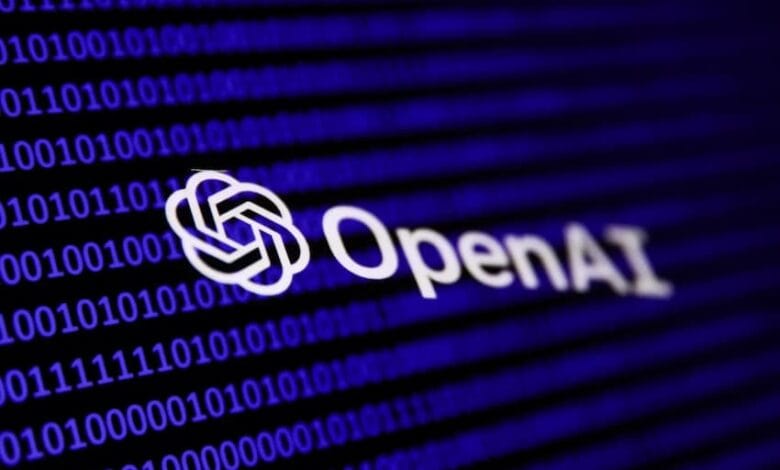OpenAI Targets Developers with GPT-4.1, A Fine-Tuned Coding Push

▼ Summary
– OpenAI has released a new family of AI models called GPT-4.1, including GPT-4.1, GPT-4.1 mini, and GPT-4.1 nano, optimized for coding tasks and complex instructions.
– These models are available exclusively through OpenAI’s API, targeting the developer community.
– A key feature is the 1-million-token context window, allowing the models to process extensive inputs, crucial for complex software development.
– The models are multimodal with enhanced coding capabilities, offering tiers based on performance, speed, and cost, with prices ranging from $2 to $0.10 per million input tokens.
– Despite improvements, GPT-4.1’s benchmark scores trail competitors like Google’s Gemini 2.5 Pro and Anthropic’s Claude 3.7 Sonnet, with noted limitations in handling maximum context windows and potential for introducing bugs.
OpenAI has introduced a new family of AI models dubbed GPT-4.1, adding another layer to its already complex naming structure. This latest release includes three distinct versions – GPT-4.1, GPT-4.1 mini, and GPT-4.1 nano – all specifically optimized for coding tasks and following complex instructions, according to the company.
Unlike the widely accessible ChatGPT interface, these new models are currently available only through OpenAI’s API, signaling a clear focus on the developer community.
Expanding Capabilities for Coders
A standout feature across the GPT-4.1 line is a massive 1-million-token context window. This allows the models to process and retain information from extremely long inputs – roughly equivalent to 750,000 words, significantly more than Leo Tolstoy’s “War and Peace.” This large context is crucial for complex software development projects where understanding extensive codebases or documentation is necessary.
OpenAI states these models are multimodal, meaning they can process information beyond just text, although the primary emphasis is on their enhanced coding prowess. The company highlights improvements based on developer feedback, focusing on areas like better frontend code generation, reduced unnecessary edits, reliable format adherence, consistent use of integrated tools, and more structured responses.
The family offers tiers:
- GPT-4.1: The most powerful, aiming for top performance.
- GPT-4.1 mini: A balance between capability, speed, and cost.
- GPT-4.1 nano: Optimized for speed and efficiency, positioned as OpenAI’s fastest and cheapest model to date, suitable for tasks requiring rapid responses.
Pricing reflects this hierarchy, ranging from $2 per million input tokens for the full model down to $0.10 for the nano version.
The Competitive Coding Arena
The launch of GPT-4.1 arrives amidst intensifying competition in the AI-assisted coding space. Google’s Gemini 2.5 Pro (also boasting a 1M token window) and Anthropic’s Claude 3.7 Sonnet have recently posted strong results on coding benchmarks. Chinese startup DeepSeek has also made strides with its V3 model.
OpenAI’s long-term vision, as articulated by CFO Sarah Friar, involves creating “agentic software engineers” – AI systems capable of handling entire software development lifecycles. GPT-4.1 represents a step towards that ambitious goal.
On the widely cited SWE-bench benchmark (specifically, the human-verified subset), OpenAI reports GPT-4.1 scores between 52% and 54.6%. While an improvement over previous OpenAI models, this currently trails the reported scores of Gemini 2.5 Pro (63.8%) and Claude 3.7 Sonnet (62.3%) on the same benchmark. However, OpenAI does claim a leading score (72%) on a specific video understanding task within the Video-MME benchmark for the full GPT-4.1 model.
Performance Considerations and Caveats
While benchmarks offer a point of comparison, real-world performance is key. OpenAI also updated the model’s knowledge cutoff to June 2024, making it more informed about recent events.
However, the company is transparent about some limitations. Like many current code-generating models, GPT-4.1 isn’t immune to introducing bugs or security vulnerabilities. Furthermore, its reliability can decrease significantly when dealing with its maximum context window. Internal tests (OpenAI-MRCR) showed accuracy dropping from around 84% with 8,000 input tokens to roughly 50% at the 1-million-token mark. OpenAI also notes the model can be more “literal” than its predecessor, GPT-4o, sometimes requiring more explicit instructions from the user.
GPT-4.1 appears to be a focused iteration aimed squarely at developers, refining capabilities for software engineering tasks while navigating the highly competitive landscape of AI coding assistants. Its performance in real-world applications via the API will be the true test.
(Source: TechCrunch)





